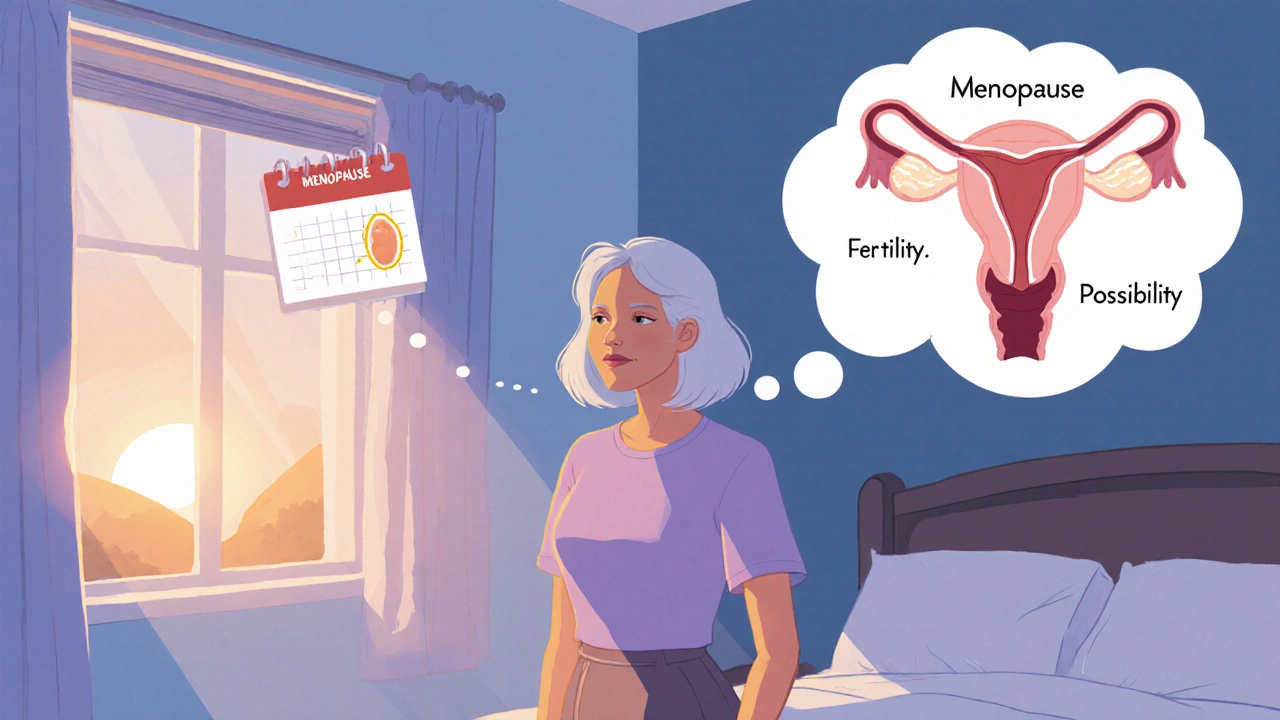Pregnancy After Menopause: Essential Insights
When looking at pregnancy after menopause, a conception that happens after a woman’s natural reproductive phase has ended. It’s also called post‑menopausal pregnancy, and it brings a unique mix of hopes and medical challenges. Understanding how the body changes and what options exist can turn uncertainty into a proactive plan.
First, let’s talk about menopause, the time when ovarian function ceases and estrogen levels drop. This stage often marks the end of natural fertility, but it also triggers a cascade of hormonal shifts that affect bone health, cardiovascular risk, and mood. When pregnancy after menopause enters the picture, those same shifts become critical factors in deciding whether to pursue a pregnancy and how to manage it safely.
Key Factors and Treatment Pathways
One of the main doors to a post‑menopausal pregnancy is fertility treatments, medical techniques such as IVF, egg donation, and embryo transfer designed to overcome natural reproductive limits. Egg donation especially bypasses the need for a woman’s own eggs, letting her carry a pregnancy with a donor’s genetic material. The success rates are quite encouraging for women in their 50s, but the process demands careful hormone monitoring and a solid health baseline.
Hormone management doesn’t stop at treatment; it continues throughout the pregnancy. That’s where hormone replacement therapy, the use of estrogen, progesterone, or combined formulations to restore hormonal balance after menopause comes in. While HRT can improve uterine lining quality and reduce miscarriage risk, it must be tailored to each individual. Too much estrogen or the wrong type of progesterone can raise clotting risk, so doctors often adjust doses as the pregnancy progresses.
Age plays a big role, too. advanced maternal age, being pregnant at 35 years or older, especially beyond 45, is linked to higher rates of hypertension, gestational diabetes, and chromosomal anomalies. These risks are amplified after menopause, making comprehensive prenatal screening and frequent check‑ups essential. Nutrition, gentle exercise, and managing stress become even more important to support both mother and baby.
Putting it all together, the journey to pregnancy after menopause typically follows this pattern: menopause creates a hormonal environment that ends natural ovulation; fertility treatments introduce viable eggs or embryos; hormone replacement therapy fine‑tunes the uterine environment; and vigilant prenatal care addresses the heightened risks of advanced age. Each step relies on the previous one, forming a clear chain of cause and effect that clinicians and patients can track.
Below you’ll find a curated selection of articles that dive deeper into each of these areas—whether you’re curious about IVF success rates for older women, the safest HRT protocols during pregnancy, or lifestyle tweaks that lower complication odds. Keep reading to discover practical tips, evidence‑based guidance, and real‑world experiences that can help you make an informed decision about this unique reproductive path.
Menopause and Fertility Options Explained
- Laura Ledas
- Oct, 17 2025
Explore how menopause affects fertility and learn real options-egg donation, IVF, HRT, and surrogacy-to help you decide the best path to parenthood after menopause.
Learn More